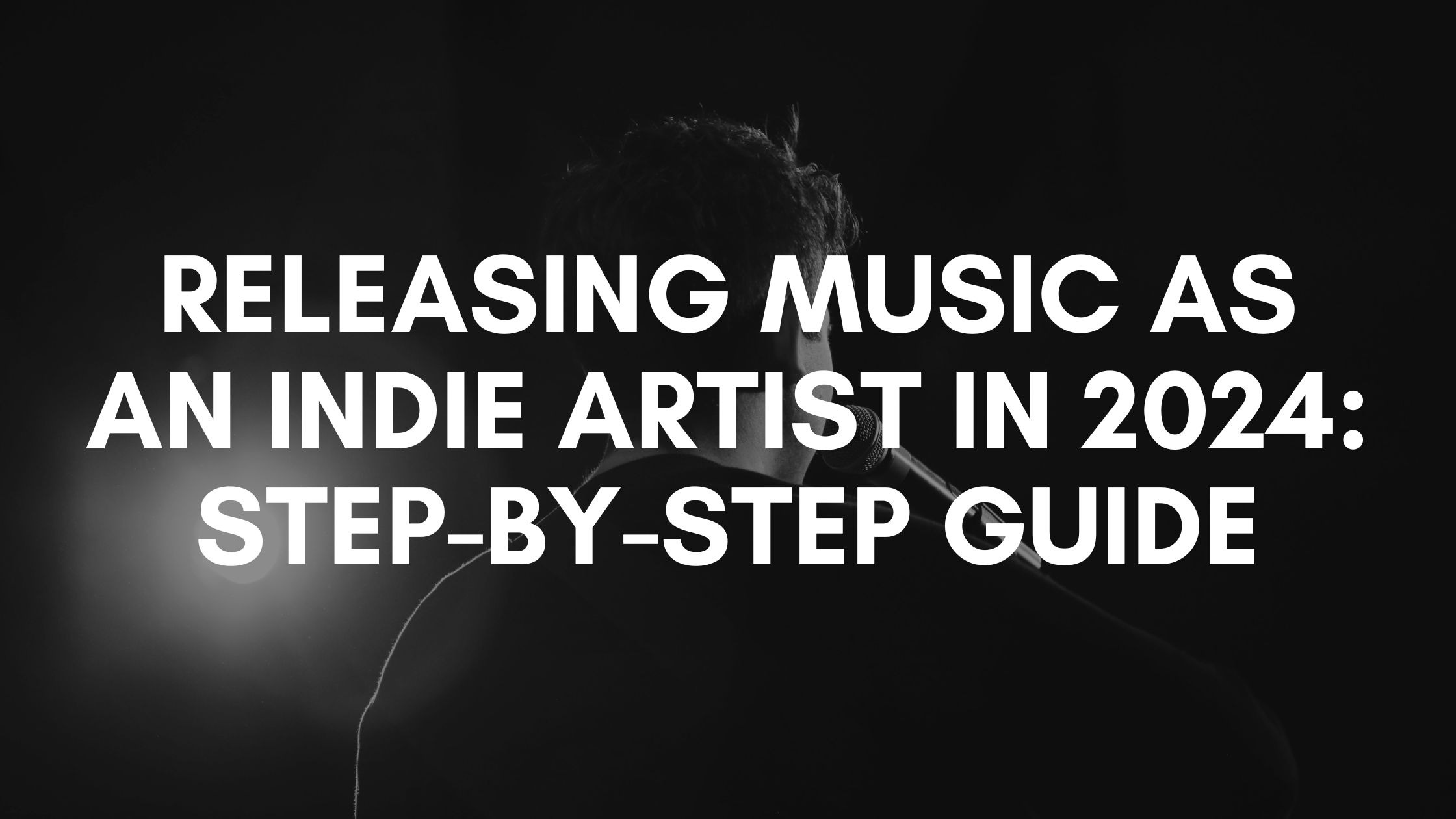Table of Contents
- Introduction
- Pre-Release Planning
- Recording and Production
- Distribution
- Building a Marketing Plan
- Promotion and PR
- Post-Release Strategies
- Long-Term Strategies
- A wrap 🌯
Introduction
In the ever-evolving music industry, the role of an indie artist has never been more significant. The freedom to create without constraints, the direct connection with an audience, and the ability to control one’s artistic journey are some of the compelling reasons artists choose the independent route. However, releasing music as an indie artist requires meticulous planning and execution. This comprehensive guide aims to equip indie artists with a step-by-step plan to ensure a successful music release in 2024.
Pre-Release Planning
Understanding Your Brand and Audience
The foundation of any successful music release begins with a deep understanding of your brand and audience. Defining your musical identity is crucial. Are you a soulful singer-songwriter, an edgy electronic producer, or a dynamic rock band? Understanding your style helps you connect with the right audience.
Utilize tools like Spotify for Artists and Chartmetric to analyze your audience demographics. These tools provide valuable data on listener locations, age groups, and listening habits, allowing you to tailor your marketing efforts effectively.
Setting Goals
Setting clear, measurable goals is vital for tracking the success of your release. Whether it’s aiming for a specific number of streams, increasing social media engagement, or securing placements on prominent playlists, having defined goals provides direction and motivation.
Creating a Release Timeline
An organized timeline is essential to avoid last-minute rushes and ensure everything is in place for your release day. Start by setting a release date and work backward, scheduling important milestones such as distribution submission, press outreach, and marketing content creation. A well-structured timeline ensures a smooth and coordinated release process.
Recording and Production
Choosing the Right Studio and Producer
Finding the right studio and producer can significantly impact the quality of your recordings. Look for studios and producers who specialize in your genre and fit your budget. Personal recommendations, online reviews, and sample work can help you make an informed decision.
Professional Recording Tips
High-quality recordings are non-negotiable. Ensure your recording environment is soundproofed to avoid external noise interference. Invest in good-quality microphones and recording software. Remember, the better the initial recording, the easier the mixing and mastering process will be.
Mixing and Mastering
Mixing and mastering are crucial steps that can make or break your music’s final sound. Professional mixing balances the various elements of your track, while mastering ensures it sounds great on all playback devices. Hiring experienced professionals or using reliable tools like LANDR and iZotope Ozone can elevate your tracks to a professional level.
Distribution
Selecting a Digital Distributor
Choosing the right digital distributor is essential for getting your music on streaming platforms like Spotify, Apple Music, and more. Popular distributors include DistroKid, TuneCore, and CD Baby. Compare their fees, additional services, and ease of use to find the best fit for your needs.
Metadata and ISRC Codes
Accurate metadata is crucial for tracking and managing your music. Ensure all song titles, artist names, and album details are correctly entered. ISRC codes are unique identifiers for your tracks, allowing you to track plays and royalties accurately. Most distributors offer ISRC codes as part of their service.

Building a Marketing Plan
Crafting Your Story
Your artist story and release narrative are what set you apart from others. Develop a compelling story that resonates with your audience. Why did you create this music? What’s the journey behind it? Sharing your personal experiences can create a deeper connection with your listeners.
Content Creation
Creating engaging content is vital for promoting your music. High-quality photos, videos, and behind-the-scenes footage keep your audience engaged. Design eye-catching cover art and promotional graphics to attract attention on social media and streaming platforms.
Social Media Strategy
Identify the platforms where your audience spends most of their time. Whether it’s Instagram, TikTok, or Twitter, tailor your content accordingly. Develop a content calendar and posting schedule to maintain consistency. Engage with your audience through live sessions, Q&As, and interactive polls to foster a loyal fanbase. Music marketing on social media is essential in order to succeed in this business.
Email Marketing
Building and segmenting an email list allows you to communicate directly with your fans. Crafting effective email campaigns with updates about your release, exclusive content, and personal messages can boost engagement and anticipation for your music.
Promotion and PR
Press Outreach
Building a press list is essential for gaining media coverage. Research music blogs, magazines, and influencers relevant to your genre. Craft a compelling press release that highlights your story, music, and what makes your release unique. Personalize your pitches to journalists and bloggers to increase your chances of getting featured.
Playlists and Streaming Platforms
Getting your music on playlists can significantly boost your streams and exposure. Engage with curators on platforms like Spotify, Apple Music, and Deezer. Use submission platforms like SubmitHub and Playlist Push to pitch your tracks. Building relationships with curators can lead to long-term playlist placements.
Live Performances and Tours
Live performances are powerful tools for promoting your music, especially when you are releasing music as an indie artist. Plan release shows and tours to connect with your audience in person. In today’s digital age, live streams and virtual concerts offer alternative ways to reach fans globally. Utilize platforms like YouTube, Twitch, and Instagram Live to perform and interact with your audience.
Post-Release Strategies
Engaging with Fans
Keeping the momentum going post-release is crucial. Share post-release content such as acoustic versions, remixes, and music videos. Running contests and giveaways can keep your audience excited and engaged.
Analyzing Results
Use tools like Spotify for Artists, Apple Music for Artists, and YouTube Analytics to track your release performance. Analyze streaming numbers, audience engagement, and feedback to understand what worked and what didn’t. Adjust your strategy based on data to improve future releases.
Long-Term Strategies
Building a Sustainable Career
Maintaining momentum after a release involves planning future projects and consistently engaging with your audience. Regularly releasing new music, videos, and updates keeps your fans interested and invested in your journey.
Networking and Collaboration
Connecting with other artists, producers, and industry professionals can open doors to new opportunities. Collaborations and joint promotions can introduce you to new audiences and create valuable industry relationships.
A wrap 🌯
Releasing music as an indie artist is a challenging yet rewarding journey. By following this step-by-step guide, you can navigate the complexities of the music industry and achieve a successful release. Stay persistent, adaptable, and true to your artistic vision. Your hard work and dedication will pave the way for a thriving music career.


